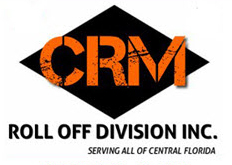Efficient Waste Management for Construction Sites
Efficient Waste Management for Construction Sites
Construction projects produce a lot of waste—concrete, drywall, wood, packaging, plastics and hazardous materials. Without a plan in place, this waste can pile up fast and cost more, be a safety hazard and harm the environment. Efficient waste management on construction sites is not just for compliance and safety—it also saves you money, reduces costs and improves project outcomes.
In this post we’ll look at why waste management on construction sites matters and practical tips to improve waste handling and disposal across all stages of a build.
Why Construction Waste Management Matters
Construction waste can make up a significant percentage of the total waste stream in many areas. Mismanagement leads to cluttered work areas, injuries, higher disposal fees and legal liabilities. More importantly it undermines environmental goals at a time when sustainability is becoming a core industry priority.
Effective waste management benefits both contractors and clients by:
- Improving site organisation and safety
- Reducing overall project costs
- Compliance with local regulations
- Minimising environmental impact
- Enhancing reputation and stakeholder trust
Types of Construction Waste
To manage waste efficiently you need to first understand the types of waste that are generated on site:
1. Inert Materials
Concrete, bricks, tiles and asphalt—non biodegradable but often recyclable.
2. Non-Inert Waste
Wood, drywall and insulation—may biodegrade but can be hazardous if not handled correctly.
3. Hazardous Waste
Paints, solvents, adhesives, asbestos and treated wood—require special disposal methods.
4. Packaging Waste
Cardboard, plastic wrap, pallets and metal banding from delivered materials.
5. General Waste
Food waste, scrap paper and other miscellaneous debris left by workers.
By identifying and categorising waste types early on project teams can develop targeted disposal and recycling strategies.
Tips for Efficient Waste Management
1. Develop a Waste Management Plan
Start every construction project with a written waste management plan that covers:
- Types and volumes of waste
- Storage and segregation methods
- On-site waste handling procedures
- Recycling and reuse goals
- Roles and responsibilities for waste trackingHaving a plan helps keep waste decisions consistent and coordinated throughout the project.
2. Segregate Waste at Source
Sorting on site is one of the most effective ways to maximise recycling and reuse. Set up clearly marked bins or dumpsters for:
- Recyclables (metal, wood, cardboard)
- Reusable materials (unbroken bricks, unused lumber)
- Hazardous waste (in approved containers)
- General landfill waste
Segregating at source minimises contamination and ensures materials can be processed through the correct channels.
3. Use the Right Equipment
Efficient waste handling requires the right tools. Common equipment for on-site waste management includes:
- Roll-off dumpsters of various sizes
- Skips or bins for different materials
- Mobile compactors to reduce volume
- Covered storage areas to protect reusable items
Partner with a waste services company that offers flexible container options to streamline collection and disposal.
4. Reuse and Recycle Whenever Possible
Many materials used in construction can be recycled or repurposed:
- Concrete and asphalt can be crushed and reused in road bases.
- Wood can be repurposed for formwork or chipped into mulch.
- Metals such as steel and copper retain value and are highly recyclable.
- Bricks and tiles may be salvaged and reused in future projects.
Build relationships with local recyclers and salvage yards to make reuse part of your standard process.
5. Train Workers and Subcontractors
Proper waste management depends on everyone on site. Conduct regular training to ensure workers and subcontractors:
- Understand the site’s waste segregation system
- Know what materials can be reused or recycled
- Follow safety protocols for handling hazardous waste
- Are aware of the environmental and financial benefits of proper disposal
Provide visual signage and colour-coded bins to support compliance and accountability.
6. Schedule Regular Waste Collection
Don’t let waste build up to hazardous levels. Work with a waste management provider to set up regular pickups based on your project size and pace. Regular removal helps:
- Keep the site clean and safe
- Avoid delays or downtime due to clutter
- Prevent illegal dumping or noncompliance penalties
Some providers also offer real-time tracking and reporting to help you measure your project’s waste performance.
Benefits of an Efficient System
Reduced CostsLess waste and more reuse means lower disposal fees and material purchases. Efficient means leaner operations and better margins.
Safer Site
A clean site is a safe site. Removing debris reduces the risk of trips, falls or fire hazards for workers and equipment.
Compliance
Many regions have strict rules for construction waste disposal. Following best practice avoids fines and legal issues.
Branding
Green building is more in demand than ever. Showcasing your commitment to sustainable construction improves your reputation and attracts eco-conscious clients.
Large Projects
Large commercial or multi-phase projects may require:
- On-site waste sorting stations
- Digital waste tracking systems
- Bulk material take-back programs from suppliers
- Dedicated waste management personnel or third-party consultants
Scaling up your waste management system is key to maintaining control and hitting diversion targets.
Conclusion
Waste management isn’t just about removing debris off-site—it’s part of smart construction planning. By planning how waste is sorted, stored and disposed of, contractors can keep sites clean, reduce environmental impact and lower project costs.
Whether you’re managing a small residential build or a large commercial development, making waste management a priority will mean smoother operations and better long-term outcomes.

